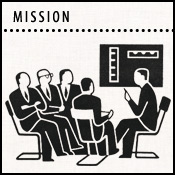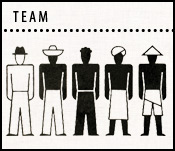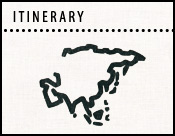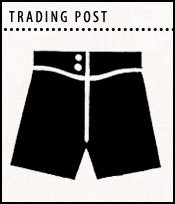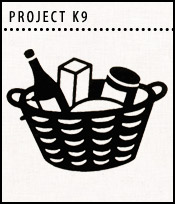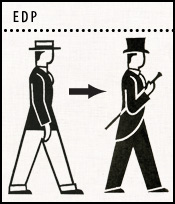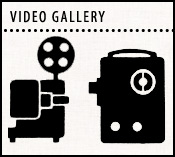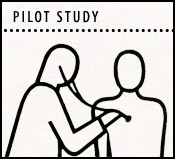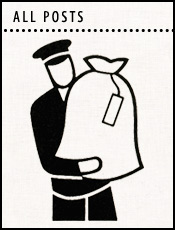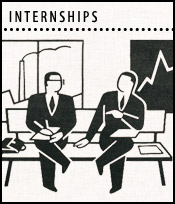June 12th, 2010
Our Friends the Vietcong
We woke up to the gentle chimes of Sim City 2000 in the roomy coolness of our digs at the Blue River Inn. We made our way downstairs to the free breakfast to find that today’s offering was a kind of smallish блин . It was tasty, but none too filling. After some deliberation, we decided that this might be just enough calories to fuel us through the short ride to the Reunification Palace.
We collected our things and climbed on the cycles. It seemed the Speed TRs were getting along especially well with Vietnam. Mine felt smooth, tight, and responsive as we wove our way through the surging waves of motor bikes.
The Vietnamese coffee, in all its cloying sweetness, was beginning to kick in and we made short work of the ride, purchasing the 85 cent tickets and entering the palace grounds.

To call this place a palace is both right and wrong. It certainly is a palace in the grand-structure-with-which-one-impresses-others sense, but it is so very communist, that one might better call it an official headquarters, or even a diplomatic reception building.
You see, dear reader, at one point, on the same ground on which one now finds the Reunification Palace, there was a very real palace, made of ornately carved wood. This was destroyed, and a new palace was built by the French, when they took over the running of Saigon after a slow but brutal campaign in 1868. The French ruled from this, though they kept the king of Vietnam around as well, doing some minor ruling from the old royal capital in the central Vietnamese city of Hue. During the second World War, the place was briefly occupied by the Japanese, until the defeat of the Axis in the Pacific and the forcible reinstatement of French rule in Vietnam.
The French had a strange habit of calling Vietnam Cochinchina, which to AsiaWheeling makes about as much sense as deciding to call Malaysia Varanasiindonesia, and this might have had something to do with the subsequent troubles that a France still recovering from crushing defeat and occupation in during WWII had in establishing control over their previous colony.
In this time of strife, Ho Chi Minh, and his communist organization, the Viet Minh took power in Vietnam and eventually, after a string of military victories, forced France to sign the Geneva Accords, which returned Vietnam to local control, with the north ruled by the communist Viet Minh, and the south ruled by the marginally democratic Republic of Vietnam, split along the fabled 17th parallel. The north was led by Ho Chi Minh (the guy on all the money here in present day Vietnam), and the south was led by a fellow named Diem (a rotten, paranoid, murdering dictator — heavily supported by the U.S.) Diem ruled from the old French palace, now dubbing it the “Independence Palace.”
During the early 60s, North Vietnamese bombers destroyed the palace that had been built by the French, so it was rebuilt in wonderful 1960s mod South East Asian Art Deco glory. To this day, it still retains the original facade and interior decoration. It also sports some interesting exhibits and re-education videos, so we figured it was worth a visit.
Inside we found it to be decorated not unlike a cooler version of the rooms in one of our grandmother’s houses. I’ll let the photos talk:

We also were sure to watch the re-education videos in the basement, which tell the story of the Vietnam War from the North Vietnamese perspective (to them it is the American War). It was very interesting and embarrassing to see how sinister and destructive my country could seem through the eyes of our one-time enemy. While I am sure that in reality the truth, as always, lies somewhere between the version of the Vietnamese War that we are taught in American schools and the one taught in Vietnamese schools, one thing is for sure, it was an ugly, wasteful, crying shame of a war.
Before we left, we made sure to tour the basement of the building, which was set up somewhat like a level from that old Nintendo 64 game, GoldenEye.
This video should corroborate:
We left the Reunification Palace hungry, and climbed on the cycles to weave our way back into the wild traffic of Ho Chi Minh City, looking for a place to eat. When we spotted a Vietnamese crushed rice restaurant, we called a waypoint, but were for one reason or another tempted even more by a restaurant across the street advertising Hue (pronounced “Hway”) food. Hue food is from the central part of Vietnam, and since we had bought tickets that skipped right over that part of the country, we figured we had better try the food.
I ordered a bowl of thick square yellow noodles with a spicy sesame broth, Scott got a clear soup with round white rice noodles. We shared a plate of tiny fried clams that we spread on pieces of toasted rice paper, sprinkled with fresh garlic and hot peppers, and scarfed down.
As we ate, a man came into the restaurant, and noticing that there were no more tables left, planted himself next to us. We exchanged greetings, but he did not appear to speak much English. It was not until we had finished eating and begun to take turns reading aloud the Vietnam War section from the Wikireader that our table partner spoke up.
It turned out that, in fact, he did speak quite good English, and presented himself to us as a Vietnamese journalist. He was interested in what two young chaps, interested in Vietnamese history were doing riding folding bicycles in this city. For one reason or another, we intrigued him enough that he agreed to meet with us later that day, at his hotel, and allow us to interview him about his life and perspectives on Vietnamese history. As you can imagine, dear reader, Scott and I were tickled pink at the opportunity, and spent the next few hours wheeling around Saigon, brainstorming questions to ask the man, and hunting down a fresh supply of pens and paper.
When we met up with the man, he had changed his clothes and was welcoming us into his luxurious room at the New World Hotel.
He called for a maid to assist him in making coffee for us. With steaming mugs in hand, we sat down in his heavily air conditioned room, and he and began to tell us his tale, and perhaps more exactly, the story of Vietnam in the 20th Century.
And this was it:
His father was born shortly after the turn of the century (the 20th). He was of wealthy intellectual background, so he studied at a good French school, eventually becoming a lawyer and securing a position within the administration of the last Vietnamese king, who still held a fair amount of power and popularity with the people at that time. Our friend was born during this time, as his father was rising to his final position as the Chief of the Office of the King. As you can imagine, this is a rather high position, and our friend’s father had become a trusted adviser to the king.
 With the end of WWII, and the aforementioned unstable power switch between the Japanese occupiers and the old French colonialists, Ho Chi Minh’s Viet Minh had come to power. It was actually our friend’s father who, in light of the growing communist power in Vietnam, suggested that the king resign once and for all, appealing to Ho Chi Minh. The king did this, and in response, Ho Chi Minh offered him a position in his new communist government, as supreme counselor. So with this, our friend’s father found his way into the Communist Party, and our friend moved from Hue to the northern communist capital of Hanoi.
With the end of WWII, and the aforementioned unstable power switch between the Japanese occupiers and the old French colonialists, Ho Chi Minh’s Viet Minh had come to power. It was actually our friend’s father who, in light of the growing communist power in Vietnam, suggested that the king resign once and for all, appealing to Ho Chi Minh. The king did this, and in response, Ho Chi Minh offered him a position in his new communist government, as supreme counselor. So with this, our friend’s father found his way into the Communist Party, and our friend moved from Hue to the northern communist capital of Hanoi.
Meanwhile, while the English and French are invading the south of Vietnam, attempting to re-establish colonial rule. Our friend is 16 at this point, and along with his father, joins the resistance. They worked in the military administration, with our friend eventually reaching the rank of Chief of Company. In 1954, the French and English are defeated, and the country is split according to the Geneva Accords along the 17th parallel. Ho Chi Minh’s administration is new, and the country is war-torn. He realizes that in order to catalyze development, he must educate his people in the ways of science and industry. And with that, our friend was assigned to be sent to Beijing (they called in Peking then) to learn metallurgy. After spending a year in Hanoi learning ä¸æ–‡, he made his way to Beijing where at the Vietnamese Embassy, he overheard a conversation that would change the rest of his life.
A telegram had just come in from Hanoi requesting that five students be selected and reassigned to learn journalism rather than their respective scientific or industrial vocation. He promptly presented himself as a volunteer and the officials agreed. It was in this way that our friend became a Chinese-trained journalist.
He returned to Vietnam four years later, in 1955, to find the U.S.-supported Diem regime in the south to be unstable and losing popular support, while meanwhile the communist Vietcong insurgency was slowly, under the direction of Ho Chi Minh, eroding the power of the Southern State. Meanwhile open war had broken out between the Soviet- and Chinese-supported North and the U.S.-supported South. By now U.S. forces were playing an active role, not just training and advising South Vietnamese military, but engaging directly in ground combat and devastating bombing of the north. Even the U.S. became fed up with Diem’s inability to lead, and he was assassinated in a U.S. supported bit of regime change. Unfortunately, subsequent leaders were no better, and were instantly seen as puppets of the Americans, which of course they were.
In the meantime, our friend is working for the North Vietnamese newspaper. Interestingly, we later noted that this fellow had a parallel occupation to the protagonist of Full Metal Jacket, “Joker”, who wrote for the American wartime newspaper Stars and Stripes, telling stories of American valor and the failings of the North Vietnamese Army.  When we asked him if he felt the press was free in North Vietnam, he explained to us, “I was free to write anything which would raise the morale of our people. I was not told what to write, and I did not write lies. I just only wrote stories that were uplifting for our struggling citizens. You may call it what you would like, but I will call it free.”
America, of course, lost. And when Saigon fell to the North Vietnamese and the Vietcong, the official moment is often considered to be when an NVA tank bulldozed its way through the gates of the Independence Palace, taking over. They renamed the place, Reunification Palace. As soon as word of the fall (or liberation) of Saigon made it to Hanoi in the north, our friend made his way down to witness the event. He told us the story of walking into the old U.S. Embassy, which was now in ruins, riddled with bullet holes and stained black with the soot from burning vehicles. He walked through the interior, which was in shambles, having been ransacked by the Vietcong. Amidst the sea of documents that covered the floor, he saw a bolt from an American rifle on the floor. He picked it up and has kept it since as a paper-weight.
Since the war, our friend went on to work in Vietnamese television news, traveling the world, and even visiting America five times, to such exotic locales as Nebraska, Kansas, San Fransisco, and Washington. On his trip to Washington, he was accompanying the Vietnamese prime minister, taking an historic image of the American and Vietnamese flags side by side on the president’s limousine.
Our friend now works in a senior capacity at Viet-My, a Vietnamese-U.S. relationship magazine published by the Vietnam-USA society. His magazine now works to build good faith and friendship between the people of the two countries. AsiaWheeling would flatter itself to think it is working to do the same.
Many people have told us not to disclose that we are American while traveling. It’s safer they say. But also, as our dear friend Mr. Stew Motta so eloquently put it, “You’ve got to represent, man.” And we agree. In traveling, AsiaWheeling has enjoyed so many more positive experiences connecting with people from other countries than we have negative ones. And in many of these, we are playing the role of representatives of our country and our race. With so many jokers out there, and so many idiotic things that have been done by Americans in the past, it would be a crime for all of us decent folk to hide behind Canada or England, rather than starting to rack up a few more positive interactions on behalf of America.
With that I’ll sign off. From the AsiaWheeling mobile offices in Ho Chi Minh City, Vietnam, good night and good luck.




























































































































































